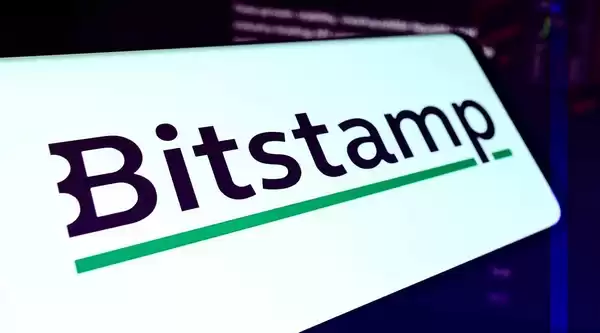-
 Bitcoin
Bitcoin $116700
2.16% -
 Ethereum
Ethereum $3830
5.76% -
 XRP
XRP $3.082
4.56% -
 Tether USDt
Tether USDt $1.000
0.04% -
 BNB
BNB $777.8
1.96% -
 Solana
Solana $173.2
5.46% -
 USDC
USDC $0.0000
0.02% -
 Dogecoin
Dogecoin $0.2146
6.85% -
 TRON
TRON $0.3384
0.92% -
 Cardano
Cardano $0.7676
5.51% -
 Hyperliquid
Hyperliquid $39.28
4.90% -
 Sui
Sui $3.723
9.07% -
 Stellar
Stellar $0.4164
6.32% -
 Chainlink
Chainlink $17.36
5.78% -
 Bitcoin Cash
Bitcoin Cash $580.9
3.62% -
 Hedera
Hedera $0.2544
5.50% -
 Ethena USDe
Ethena USDe $1.001
0.02% -
 Avalanche
Avalanche $22.81
3.81% -
 Litecoin
Litecoin $120.8
3.60% -
 UNUS SED LEO
UNUS SED LEO $8.956
-0.35% -
 Toncoin
Toncoin $3.311
4.28% -
 Shiba Inu
Shiba Inu $0.00001266
4.15% -
 Uniswap
Uniswap $10.10
5.97% -
 Polkadot
Polkadot $3.786
4.80% -
 Dai
Dai $1.000
0.01% -
 Monero
Monero $280.4
-4.02% -
 Bitget Token
Bitget Token $4.405
1.69% -
 Cronos
Cronos $0.1480
5.13% -
 Pepe
Pepe $0.00001087
5.67% -
 Ethena
Ethena $0.6348
11.62%
How to adjust leverage on Bitstamp
Leverage trading on Bitstamp provides traders with the flexibility to amplify their trading profits and losses, but it's crucial to determine appropriate leverage ratios and implement robust risk management strategies.
Nov 11, 2024 at 06:13 pm

How to Adjust Leverage on Bitstamp: A Comprehensive Guide
Leverage, a powerful tool that magnifies trading profits and losses, is a common practice in the cryptocurrency industry. Bitstamp, one of the most reputable cryptocurrency exchanges, offers leverage trading to its users, enabling them to amplify their returns while simultaneously increasing their risk exposure. This detailed guide will provide a step-by-step explanation of how to adjust leverage on Bitstamp, empowering traders with the knowledge to optimize their trading strategies effectively.
Understanding Leverage
Before delving into the mechanics of adjusting leverage, it is essential to grasp the underlying concept. Leverage refers to borrowing funds from a broker or exchange to enhance the trading position. By employing leverage, traders can multiply their capital, potentially leading to substantial gains. However, leverage is a double-edged sword, as it magnifies both profits and losses, amplifying the risk.
Determining Leverage Requirements
The first step in adjusting leverage on Bitstamp is to determine the appropriate leverage amount. This depends on various factors, including risk tolerance, trading strategy, and account balance. Conservative traders may prefer lower leverage ratios to minimize potential losses, while aggressive traders may opt for higher ratios to maximize profit potential. It is crucial to remember that higher leverage increases the risk of account liquidation.
Steps to Adjust Leverage on Bitstamp
- Log in to Bitstamp Account: Access the Bitstamp platform using your login credentials. Ensure that you have sufficient funds in your account to cover potential margin calls.
- Navigate to Margin Trading: Once logged in, navigate to the "Margin Trading" section on Bitstamp. This section provides a comprehensive overview of your margin account, including leverage settings.
- Select Trading Pair: Choose the trading pair you wish to adjust the leverage for. Bitstamp offers leverage trading on various cryptocurrency pairs, including BTC/USD, ETH/USD, and XRP/USD.
- Set Leverage Ratio: Locate the "Leverage" field and enter the desired leverage ratio. Bitstamp allows leverage ratios ranging from 2x to 10x. Choose a ratio that aligns with your risk tolerance and trading strategy.
- Confirm Leverage Adjustment: Carefully review the leverage ratio and ensure it meets your trading requirements. Once satisfied, click on the "Confirm" button to activate the adjusted leverage setting.
- Monitor Leverage Ratio: It is crucial to monitor your leverage ratio regularly, especially during volatile market conditions. Bitstamp allows you to adjust the leverage ratio at any time, providing flexibility to adapt to changing market dynamics.
Considerations
- Risk Management: Leverage trading carries inherent risks, and it is essential to implement robust risk management strategies. Always trade within your risk tolerance and consider placing stop-loss orders to mitigate potential losses.
- Margin Calls: If the value of your position falls below a certain threshold, known as a margin call, Bitstamp may require you to deposit additional funds or reduce your position size. Failure to meet the margin call may result in the liquidation of your position.
- Volatility: Leverage trading is particularly sensitive to market volatility. During periods of high volatility, it is prudent to exercise caution and consider reducing leverage ratios to minimize the risk of losses.
Top 5 Cryptocurrency Margin Trading Exchanges (Excluding FTX)
- Bitstamp: Renowned for its security, reliability, and user-friendly interface, Bitstamp offers leverage trading with ratios up to 10x.
- Binance: Known for its extensive cryptocurrency selection and advanced trading features, Binance provides leverage trading with ratios up to 20x.
- Kraken: Established as a leader in security and compliance, Kraken offers leverage trading with ratios up to 5x, catering to risk-averse traders.
- Deribit: Recognized as a specialized derivatives exchange, Deribit caters to experienced traders with leverage trading ratios up to 100x on futures contracts.
- Bybit: A popular platform for high-volume traders, Bybit offers leverage trading with ratios up to 100x, along with advanced order types and social trading features.
Conclusion
Adjusting leverage on Bitstamp is a straightforward process that allows traders to customize their trading strategies. By carefully determining leverage requirements and employing sound risk management practices, traders can enhance their potential returns while mitigating trading risks. Remember, leverage is a powerful tool that should be used with caution and a deep understanding of its implications.
Disclaimer:info@kdj.com
The information provided is not trading advice. kdj.com does not assume any responsibility for any investments made based on the information provided in this article. Cryptocurrencies are highly volatile and it is highly recommended that you invest with caution after thorough research!
If you believe that the content used on this website infringes your copyright, please contact us immediately (info@kdj.com) and we will delete it promptly.
- BlockchainFX, Bitcoin Swift, Crypto Presales: What's the Hype?
- 2025-08-07 19:10:13
- SHIB Community at Crossroads: Shytoshi Kusama's Leadership Under Scrutiny as Elections Loom
- 2025-08-07 18:30:13
- IREN Overtakes: A New King in the Bitcoin Miner Hashrate Race?
- 2025-08-07 16:31:29
- Memecoins Mania: Whales Eye Pepe Dollar (PEPD) as Bonk Cools Off, While MoonBull Hogs the Spotlight!
- 2025-08-07 16:51:17
- Unilabs, PEPE, and Investment Risk: Navigating the Crypto Hype
- 2025-08-07 16:31:29
- Meme Coin Mania: Rug Pulls, CZ-Inspired Tokens, and the Wild West of Crypto
- 2025-08-07 16:57:14
Related knowledge

What programming languages are used for smart contracts?
Aug 07,2025 at 06:07pm
Understanding Smart Contracts and Their Execution EnvironmentSmart contracts are self-executing programs deployed on blockchain networks that automati...

What is a long position in crypto contracts?
Aug 07,2025 at 06:29pm
Understanding the Concept of a Long Position in Crypto ContractsA long position in crypto contracts refers to a trading strategy where a trader buys a...

Why is my Bitstamp futures position being liquidated?
Jul 23,2025 at 11:08am
Understanding Futures Liquidation on BitstampFutures trading on Bitstamp involves borrowing funds to open leveraged positions, which amplifies both po...

How to report Bitstamp futures for taxes?
Jul 30,2025 at 08:35am
Understanding Bitstamp Futures and Taxable EventsWhen trading Bitstamp futures, it’s essential to recognize that these financial instruments are treat...

Does Bitstamp offer inverse contracts?
Jul 23,2025 at 01:28pm
Understanding Inverse Contracts in Cryptocurrency TradingIn the realm of cryptocurrency derivatives, inverse contracts are a specific type of futures ...

What is the difference between futures and perpetuals on Bitstamp?
Jul 27,2025 at 05:08am
Understanding Futures Contracts on BitstampFutures contracts on Bitstamp are financial derivatives that allow traders to speculate on the future price...

What programming languages are used for smart contracts?
Aug 07,2025 at 06:07pm
Understanding Smart Contracts and Their Execution EnvironmentSmart contracts are self-executing programs deployed on blockchain networks that automati...

What is a long position in crypto contracts?
Aug 07,2025 at 06:29pm
Understanding the Concept of a Long Position in Crypto ContractsA long position in crypto contracts refers to a trading strategy where a trader buys a...

Why is my Bitstamp futures position being liquidated?
Jul 23,2025 at 11:08am
Understanding Futures Liquidation on BitstampFutures trading on Bitstamp involves borrowing funds to open leveraged positions, which amplifies both po...

How to report Bitstamp futures for taxes?
Jul 30,2025 at 08:35am
Understanding Bitstamp Futures and Taxable EventsWhen trading Bitstamp futures, it’s essential to recognize that these financial instruments are treat...

Does Bitstamp offer inverse contracts?
Jul 23,2025 at 01:28pm
Understanding Inverse Contracts in Cryptocurrency TradingIn the realm of cryptocurrency derivatives, inverse contracts are a specific type of futures ...

What is the difference between futures and perpetuals on Bitstamp?
Jul 27,2025 at 05:08am
Understanding Futures Contracts on BitstampFutures contracts on Bitstamp are financial derivatives that allow traders to speculate on the future price...
See all articles

























































































